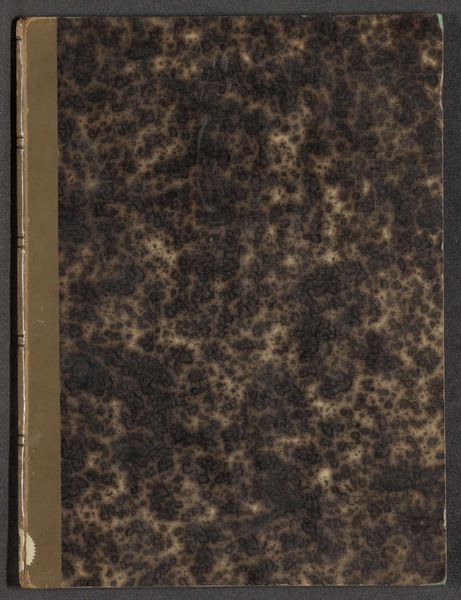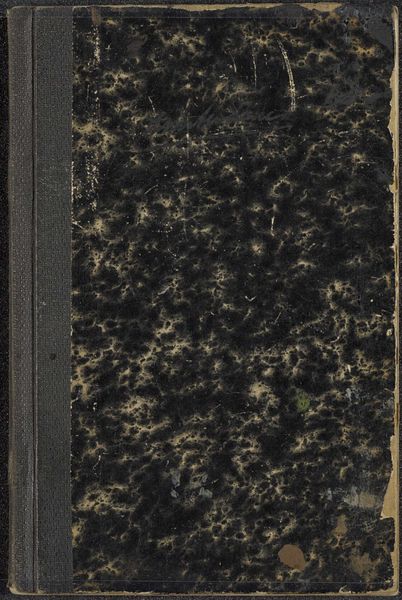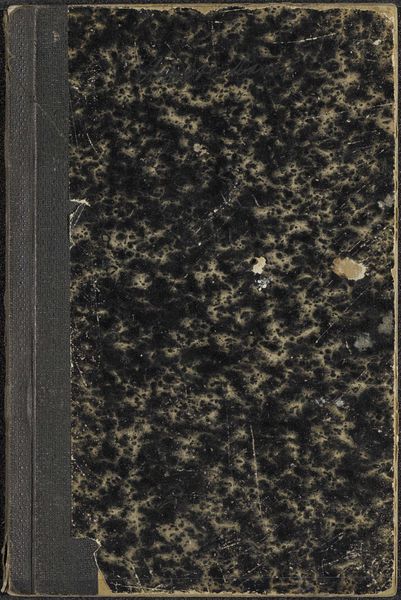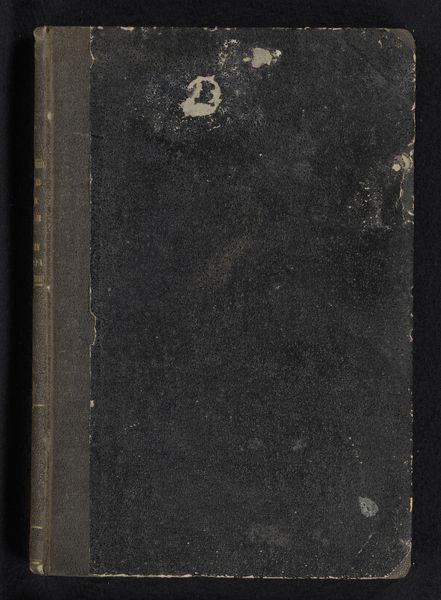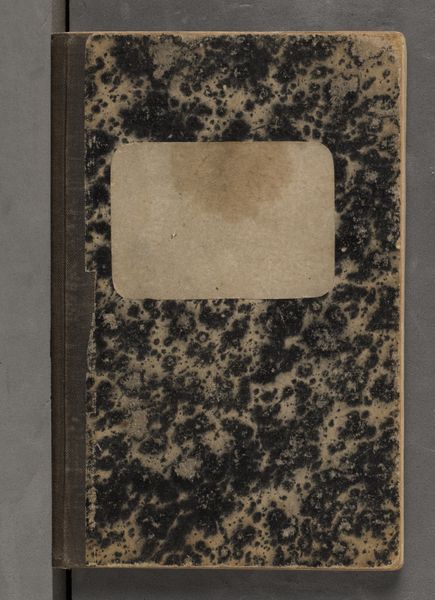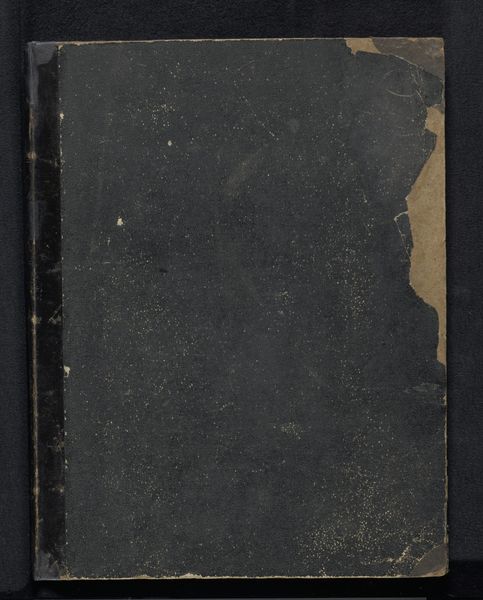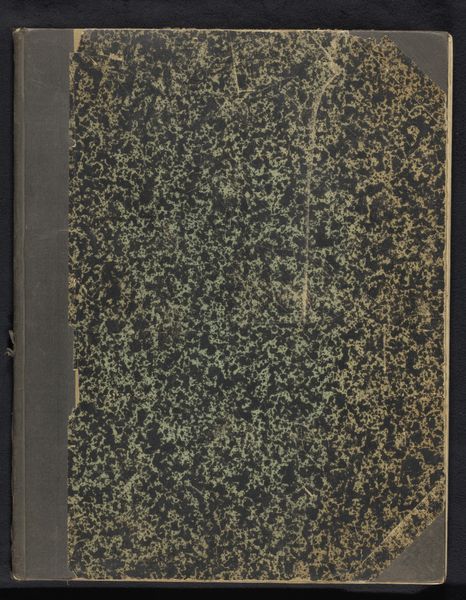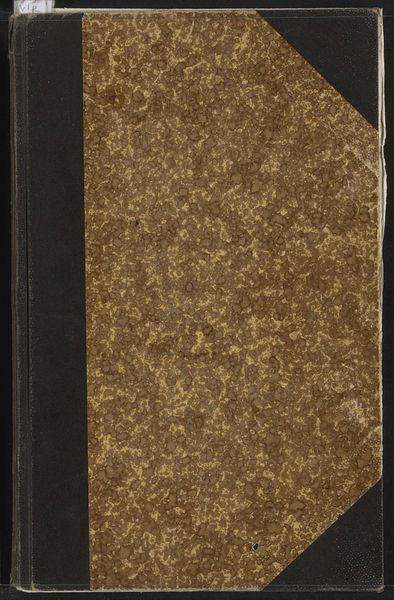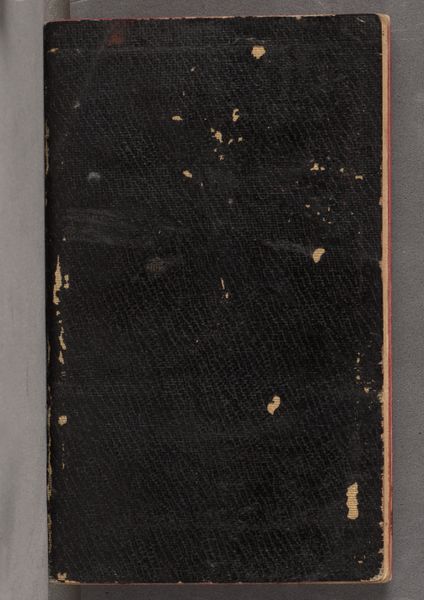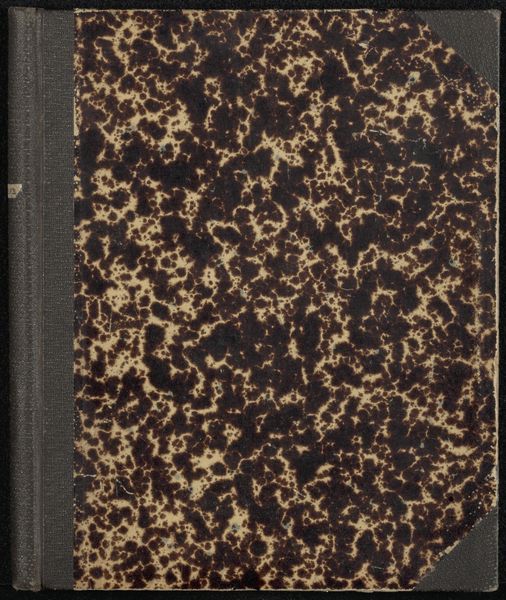
La verité sur la fuite et l'arrestation de Louis XVI à Varennes d'après des documents inédits 1866
0:00
0:00
print, photography
#
natural stone pattern
#
worn
# print
#
textured
#
detailed texture
#
photography
#
grainy texture
#
chalky texture
#
carved into stone
#
map art
#
texture
#
organic texture
#
modernism
Dimensions: height 225 mm, width 155 mm, thickness 32 mm
Copyright: Rijks Museum: Open Domain
Curator: What a curious object we have here, a vintage print entitled "La vérité sur la fuite et l'arrestation de Louis XVI à Varennes d'après des documents inédits" created in 1866 by Étienne Auguste Ancelon. It's captivating, don’t you think? Editor: The marbling is just fantastic. I am really drawn to the cover's tactile qualities; the swirling patterns remind me of artisanal paper, of meticulously hand-crafted objects, maybe even some sort of bookbinding? Curator: Indeed, the material feel is quite dominant. What’s striking to me is that, as the title suggests, this image serves as a 'truth' about Louis XVI's escape and capture. I wonder how effectively print functions as truth-telling. Editor: I think you make a valid point. How could a printed image embody truth about a historical event? Consider the labor involved: From paper production and printmaking, to widespread distribution—it brings into focus a whole industry, an ecosystem of making and knowing. It makes one consider the very notion of historical truth as a manufactured artifact. Curator: Right. Is this about history or about craft? Because in the past images have taken over to be iconic regardless of their accuracy or how truthful they are, so it also sparks my concern, what is to be believed and what is manipulated to seem real? Editor: Precisely. And the date, 1866, positions it within a specific moment in print culture, during an industrialization era that massively impacted the production and consumption of printed images. Maybe truth has to do more with social and economic processes and less with representation of what occurred. Curator: And the print gives such an impression of time gone by. I keep thinking about who first laid eyes on it, what stories it sparked, and even what hands physically crafted and made it. It’s humbling. Editor: For me it evokes thoughts of the everyday maker—a consideration for those invisible hands that contribute to culture through material work, and how they become central to meaning making. Curator: A beautifully complex piece, made of countless little stories and a tangible surface. Editor: A historical object that invites us to re-evaluate the means through which our realities and beliefs are built.
Comments
No comments
Be the first to comment and join the conversation on the ultimate creative platform.
